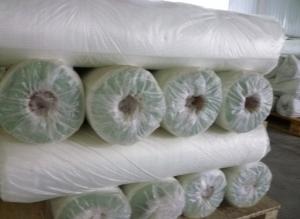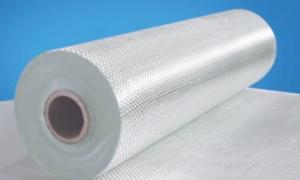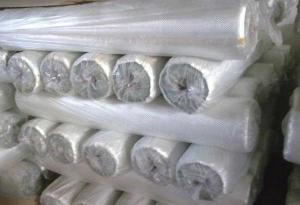E-GLASS FIBER WOVEN FABRIC
- Loading Port:
- China Main Port
- Payment Terms:
- TT or LC
- Min Order Qty:
- -
- Supply Capability:
- 400ton kg/month
OKorder Service Pledge
OKorder Financial Service
You Might Also Like
1.Brief Introduction
E-glss fiber woven roving is bidirectional fabric made by interweaving direct roving.
Woven Roving are compatible with many resin systems such as polyester, vinyl ester, epoxy and phenolic resins. Woven Roving are high-performance reinforcement widely used in hand lay-up and robot processes for the production of boats, vessels, plane and automotive parts, Pipe, furniture and sports facilities.
2.Characteristics
Top quality woven rovng fabric, E or C glass product
Woven roving fabric is bidirectional fabric made by interweaving direct roving. E-Glass Woven Roving is compatible with many resin systems such as polyester, vinyl ester, epoxy and phenolic resins. E-glass Woven Roving is a high-performance reinforcement widely used in hand lay up and robot processes for the production of boats, vessels, plane and automotive parts, furniture and sports facilities.
Product Features:
1. Warp and weft roving aligned in a parallel and flat manner, resulting in uniform tension.
2. Densely aligned fibers, resulting in high dimensional stability and making handing easy.
3. Good mold ability, fast and complete wet in resins, resulting in high productivity.
4. Good transparency and high strength of composite products.
3.Product Specifications
Items: | Warp Tex | Weft Tex | Warp Density | Woft Density | Weight | Combustible |
Ends/cm | Ends/cm | g/m2 | Content(%) | |||
WRE260 | 600 | 600 | 2.2 | 2.2 | 251-277 | 0.4-0.8 |
WRE270 | 300 | 300 | 4.6 | 4.1 | 248-274 | 0.4-0.8 |
WRE300 | 600 | 600 | 3.2 | 1.8 | 296-328 | 0.4-0.8 |
WRE360 | 600 | 900 | 3.2 | 1.8 | 336-372 | 0.4-0.8 |
WRE400A | 600 | 600 | 3.2 | 3.8 | 400-440 | 0.4-0.8 |
WRE400B | 600 | 900 | 3.2 | 2.3 | 380-420 | 0.4-0.8 |
WRE500A | 1200 | 1200 | 2.2 | 2.0 | 475-525 | 0.4-0.8 |
WRE500B | 1200 | 1750 | 2.0 | 1.6 | 495-545 | 0.4-0.8 |
WRE500T | 1200 | 1200 | 2.2 | 2.2 | 500-554 | 0.4-0.8 |
WRE550 | 1530 | 1200 | 2.0 | 2.0 | 520-570 | 0.4-0.8 |
WRE580 | 1200 | 1200 | 2.6 | 2.2 | 550-610 | 0.4-0.8 |
WRE600B | 2200 | 1200 | 2.0 | 1.6 | 600-664 | 0.4-0.8 |
WRE600C | 1290 | 1290 | 2.8 | 2.0 | 588-650 | 0.4-0.8 |
WRE600D | 1530 | 1530 | 2.0 | 2.0 | 580-642 | 0.4-0.8 |
WRE800A | 1200*2 | 1200*2 | 2.0 | 1.5 | 800-880 | 0.4-0.8 |
WRE800B | 2400 | 2400 | 2.0 | 1.6 | 820-908 | 0.4-0.8 |
WRE800C | 1750 | 1750 | 2.8 | 2.0 | 800-880 | 0.4-0.8 |
WRE800D | 1200*2 | 1530*2 | 2.0 | 1.2 | 806-890 | 0.4-0.8 |
WRE800T | 2400 | 1750 | 2.0 | 2.0 | 790-870 | 0.4-0.8 |
WRE1200A | 4000*2 | 4400 | 0.8 | 1.4 | 1190-1320 | 0.4-0.8 |
WRE1200B | 2400*2 | 2400*2 | 1.4 | 1.2 | 1190-1310 | 0.4-0.8 |
4.FAQ
Packaging & Delivery
Packaging Details: | Poly bag, then loading into carton box |
Delivery Detail: | 20 days after confirm order |
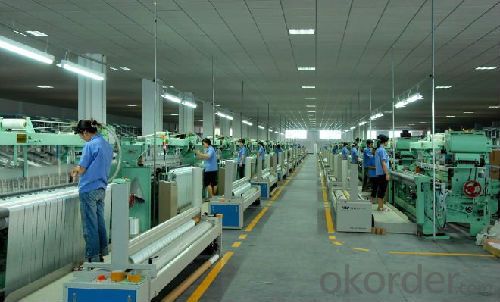
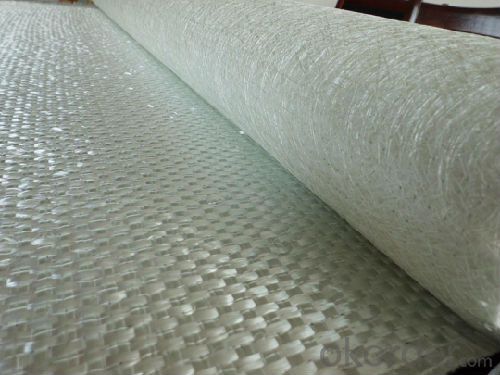
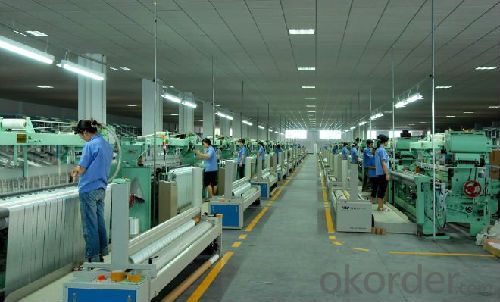
- Q:Can fiberglass fabrics be used for insulation in cryogenic storage tanks?
- Yes, fiberglass fabrics can be used for insulation in cryogenic storage tanks. Fiberglass has excellent thermal insulation properties and can withstand low temperatures, making it a suitable material for cryogenic applications.
- Q:Two, fat and PVC paste resin paste into the sizing, coated on glass fiber cloth, so that after baking, how do not shrink?
- The auxiliary plasticizer can be added, and the dissolving capacity of the auxiliary plasticizer is relatively small, and when used, the viscosity is reduced and the storage is favorable.
- Q:What is the typical tensile strength of fiberglass fabrics?
- The typical tensile strength of fiberglass fabrics can vary, but it is generally around 300-600 MPa (megapascals).
- Q:Can fiberglass fabrics be used for insulation in refrigeration systems?
- Yes, fiberglass fabrics can be used for insulation in refrigeration systems. Fiberglass is a popular choice for insulation in various applications, including refrigeration systems, due to its thermal resistance and durability. It helps to maintain the desired temperature within the system by minimizing heat transfer.
- Q:Which is more durable, stone cotton or glass cloth?
- Asbestos is a specialized mineral that can be obtained by processing. Glass fiber is usually fused with quartz and alkali. The more alkali is added, the worse the performance is. Many processes require alkali free fiberglass.If you want to talk, open another question
- Q:Can fiberglass fabric be used for banners and signs?
- Certainly! Banners and signs can indeed make use of fiberglass fabric. This versatile material provides numerous advantages in this regard. Its durability, lightweight nature, and resistance to various weather conditions render it fitting for both indoor and outdoor purposes. Furthermore, fiberglass fabric boasts a sleek surface that allows for top-notch printing and vivid colors. It also proves effortless to maneuver and can be readily mounted or hung. Ultimately, employing fiberglass fabric for banners and signs guarantees prolonged lifespan and aesthetic allure, explaining why countless businesses and organizations favor it.
- Q:Is fiberglass fabric suitable for making backpacks and bags?
- While fiberglass fabric can indeed be used for creating backpacks and bags, it does not rank as the most prevalent or favored material. Renowned for its robustness, endurance, and fire resistance, fiberglass fabric proves to be an excellent option for applications that necessitate these qualities. Nevertheless, it may lack the flexibility and lightweight nature commonly found in backpacks and bags fashioned from polyester or nylon, materials more frequently utilized for this purpose. Moreover, fiberglass fabric tends to be pricier and less skin-friendly. In addition, precautionary measures must be taken during manufacturing to prevent the release of loose fibers, which can cause skin and respiratory irritations. Therefore, while fiberglass fabric can be deemed suitable for certain scenarios, it may not be the most practical or comfortable choice for everyday use or individuals with specific needs or sensitivities.
- Q:How does fiberglass fabric perform in terms of fire resistance?
- Fiberglass fabric has excellent fire resistance properties. It is inherently non-combustible and does not contribute to the spread of fire. It has a high melting point, which allows it to withstand high temperatures without catching fire or melting. Additionally, fiberglass fabric does not release toxic fumes when exposed to flames, making it a safe choice in fire-prone environments.
- Q:How does fiberglass fabric handle mold and mildew?
- Fiberglass fabric is highly resistant to mold and mildew growth. This is primarily due to its composition and properties. Unlike organic materials such as cotton or wool, fiberglass is made from inorganic materials, mainly glass fibers. These glass fibers are tightly woven together to create a strong and durable fabric. One of the key reasons why fiberglass fabric is resistant to mold and mildew is its non-porous nature. Mold and mildew thrive in moist environments, and organic materials provide a suitable food source for them. However, fiberglass fabric does not absorb moisture, making it difficult for mold and mildew to grow. Additionally, the smooth surface of fiberglass fabric does not provide crevices or areas for mold spores to settle and grow. Furthermore, fiberglass fabric is often treated with a special coating during the manufacturing process. This coating adds an extra layer of protection against mold and mildew. It acts as a barrier, preventing moisture from penetrating the fabric and inhibiting the growth of mold and mildew. However, it is important to note that although fiberglass fabric is highly resistant to mold and mildew, it is not entirely immune. If the fabric is exposed to prolonged periods of high humidity or damp conditions, there is still a slight possibility for mold and mildew to develop. Regular cleaning and maintenance, along with keeping the fabric dry and well-ventilated, can help prevent any potential growth. Overall, fiberglass fabric's non-porous nature, smooth surface, and often applied protective coating make it an excellent choice for environments where mold and mildew resistance is a concern. Its resistance to these types of growths contributes to its longevity and durability, making it a preferred material for various applications such as insulation, protective clothing, and construction materials.
- Q:Can fiberglass fabric be used for making tarpaulins?
- Yes, fiberglass fabric can be used for making tarpaulins. Fiberglass fabric is known for its durability, strength, and resistance to harsh weather conditions. It is commonly used in various applications, including the production of tarpaulins. The fiberglass fabric is lightweight yet has excellent tear resistance and can withstand high temperatures. It is also waterproof, making it an ideal material for protecting goods and equipment from rain, snow, and other environmental factors. Additionally, fiberglass fabric is resistant to chemicals, UV rays, and mildew, enhancing its longevity and performance as a tarpaulin material.
1. Manufacturer Overview |
|
|---|---|
| Location | |
| Year Established | |
| Annual Output Value | |
| Main Markets | |
| Company Certifications | |
2. Manufacturer Certificates |
|
|---|---|
| a) Certification Name | |
| Range | |
| Reference | |
| Validity Period | |
3. Manufacturer Capability |
|
|---|---|
| a)Trade Capacity | |
| Nearest Port | |
| Export Percentage | |
| No.of Employees in Trade Department | |
| Language Spoken: | |
| b)Factory Information | |
| Factory Size: | |
| No. of Production Lines | |
| Contract Manufacturing | |
| Product Price Range | |
Send your message to us
E-GLASS FIBER WOVEN FABRIC
- Loading Port:
- China Main Port
- Payment Terms:
- TT or LC
- Min Order Qty:
- -
- Supply Capability:
- 400ton kg/month
OKorder Service Pledge
OKorder Financial Service
Similar products
New products
Hot products
Related keywords

